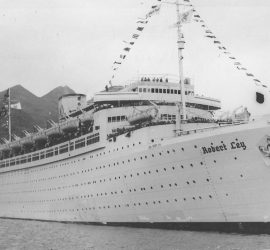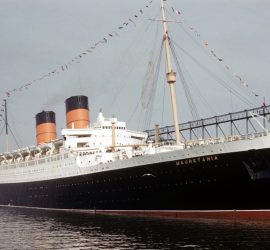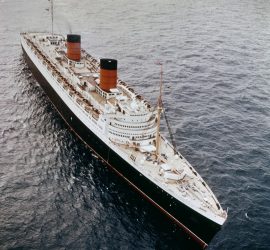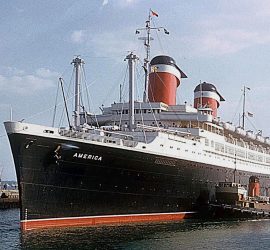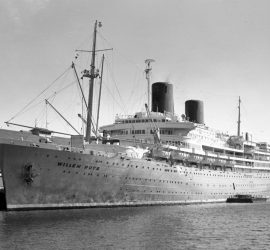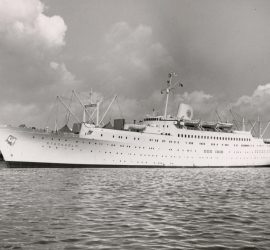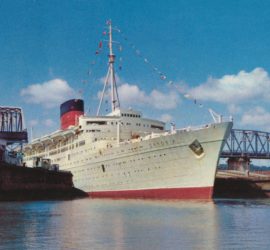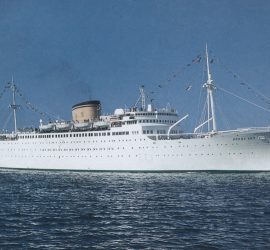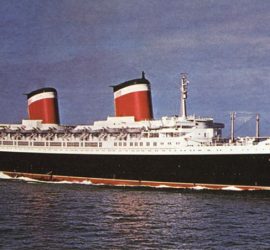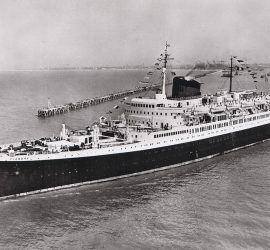1939 – 1947 / Another ship of the ‘Kraft durch Freude’ project, the Robert Ley did not see much use as a cruise ship before World War II broke out. Utilised mainly as an accommodation ship, she was bombed in the port of Hamburg in the spring of 1945 and sent for demolition once the war was over.
Yearly archives: 2018
1939 – 1965 / Part of a new breed of Cunarders, the second Mauretania saw just a few months of service before being called up for use as a troop transport. After the war, she had a prosperous career doing crossings and cruises, but was eventually sold for scrap when passengers abandoned liners in favour of air travel.
1940 – 1973 / Queen Elizabeth did not see passenger service until after World War II, during which she provided invaluable service as a troop transport. In peacetime, ‘Lizzie’ ran in tandem with Mary, earning Cunard a fortune. Sadly, her life came to an end in 1973 when she was destroyed by fire in Hong Kong harbour.
1940 – 1994 / Also known as Australis, Italis, Noga, Alferdoss, and American Star / The greatest American-built ship of her time, the America was the pride of the US merchant fleet and had a long career under various flags. She is perhaps best known for her tragic demise; grounded on the rocks of Fuerteventura, she was broken in half and slowly destroyed by the forces of nature.
1947 – 1994 / Also known as Achille Lauro / An intermediate Dutch liner, the construction of the Willem Ruys was interrupted by the outbreak of World War II. She entered commercial service after the war, and became most famous under the name Achille Lauro, when she was hijacked by Palestinian terrorists in 1985.
1948 – Present Day / Also known as Völkerfreundschaft, Volker, Italia, Italia Prima, Valtur Prima, Caribe, Athena, Azores, and Astoria / A smaller ship of the Swedish-American Line, the Stockholm became famous when she collided with and sank the Andrea Doria in 1956. The ship survived and would have a long career and remarkably, she is still in service today, although heavily rebuilt and virtually unrecognisable.
1949 – 1974 / Also known as Columbia and Caribia / Purpose-built for leisure voyages, Cunard’s ‘Green Goddess’ Caronia was unique in every sense of the word. Offering an exclusive experience, she was a sign of the times that passenger shipping was transitioning from crossings to cruises.
1952 – Present Day / The ocean greyhound to rule them all, United States was the last liner to capture the Blue Riband. However, her career was soon put on life support with government subsidies, and she was retired in 1969. Astonishingly, she survives to this day, although a sad shadow of her former self and with a very uncertain future.
1952 – 1994 / Also known as Carla C, Carla Costa, and Pallas Athena / Built to modernise the French Line’s fleet after the war, Flandre was unfortunately beset with electrical problems at the start of her career. In spite of this, she went on to have a long career with various companies, but was lost to fire in 1994.

